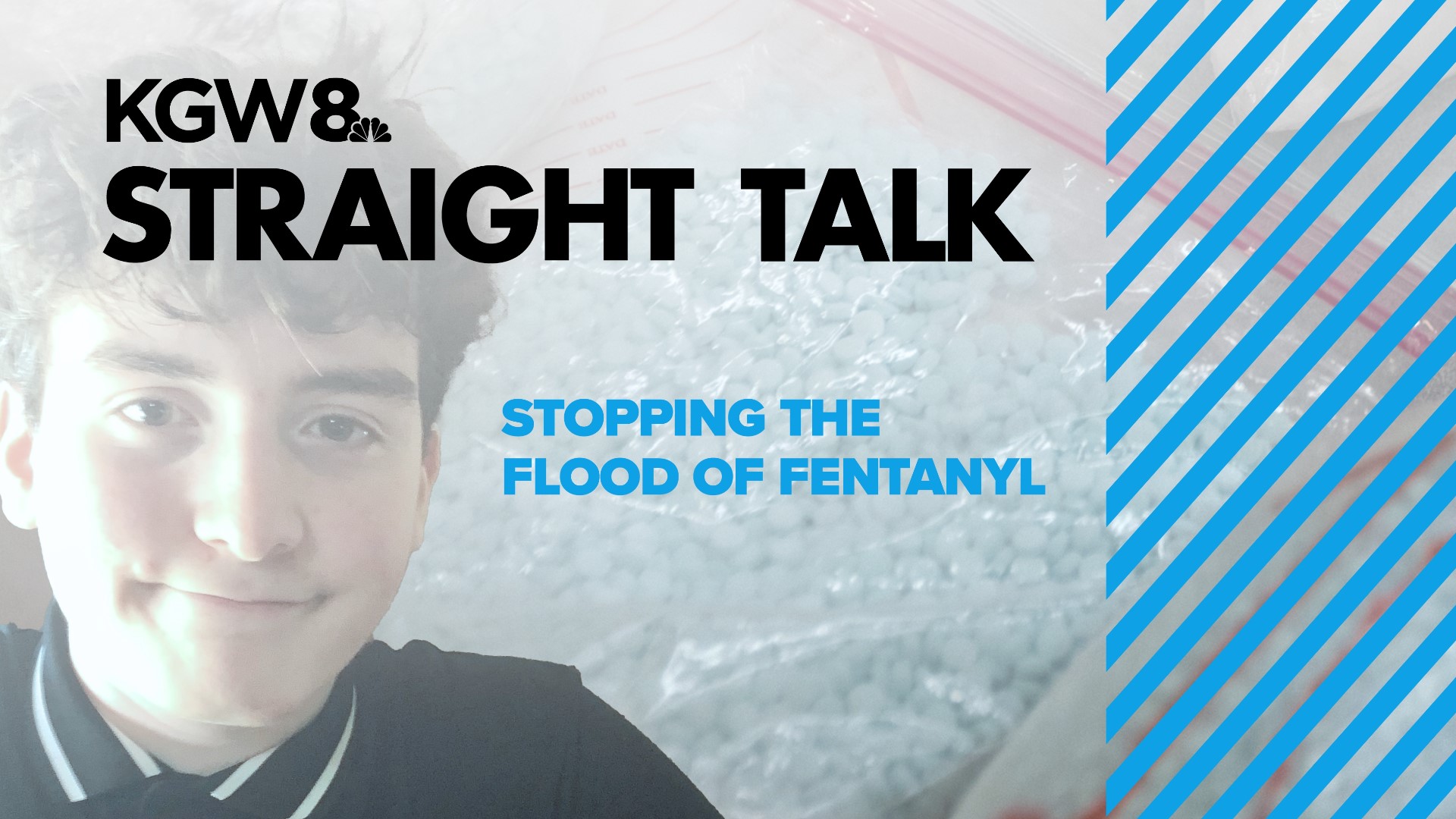'You've got to assume it has fentanyl in it': Fentanyl crisis claiming lives in Oregon and Washington
The conversation experts say every family needs to have.
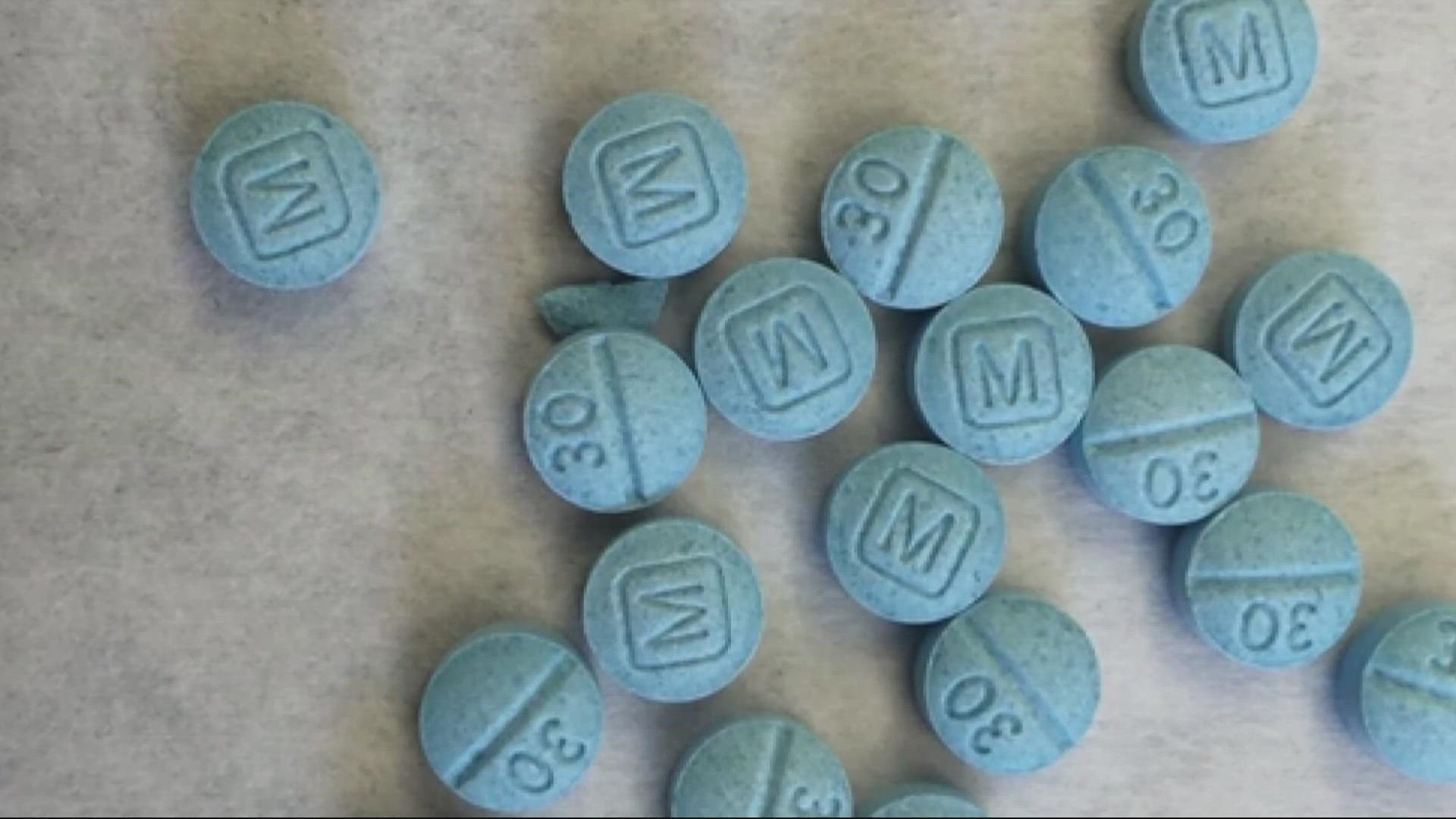
Griffin Hoffmann was a typical 16-year-old, doing his best in a world that hasn't been easy on kids in the past few years. He loved his friends. He had a heart for social justice. He struggled with anxiety during the COVID-19 pandemic. He was a tennis star at McDaniel High in northeast Portland. He went to the movies, he played video games. And he did something many teens do — he experimented at times with drugs.
On a Monday morning in March, Griffin was found dead in his bedroom. He had overdosed on fentanyl, a synthetic opioid more powerful than morphine. Police quickly found blue pills in his room, which had been manufactured to look like prescription oxycodone. That's what his mother, Kerry Cohen said Griffin thought it was when he took it.

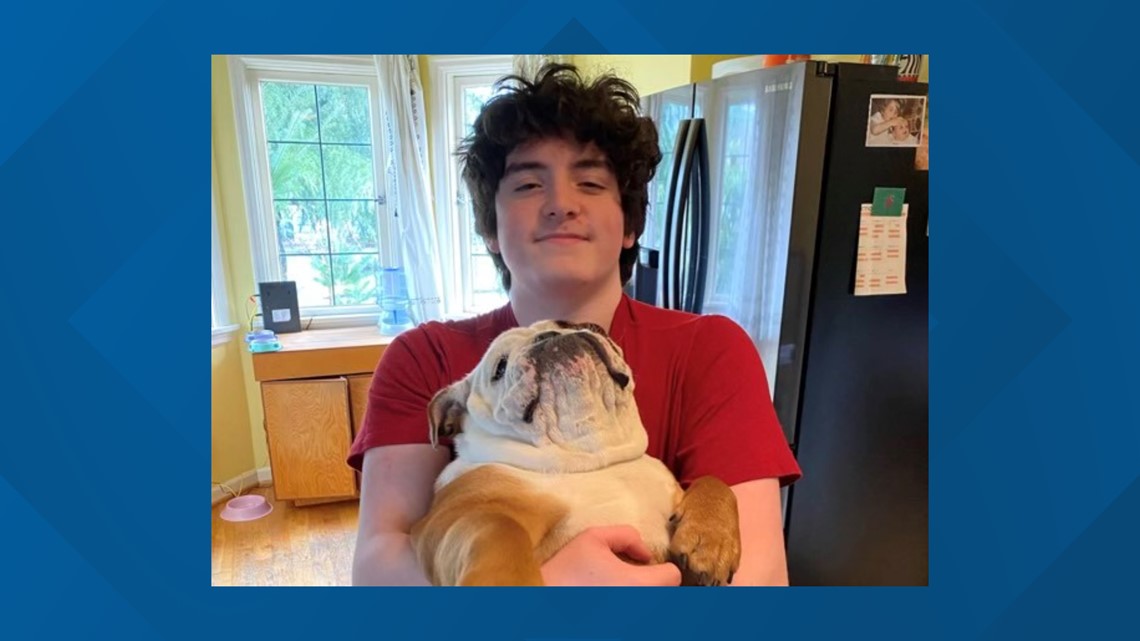
"He thought he was getting an oxy. He might have vomited all night and woken up the next day. He didn't know he was getting poison," said Cohen.
Only a day before, another student at his school, Olivia Coleman, also died from a fentanyl overdose.
Kids experiment with drugs for a variety of reasons, ranging from curiosity to peer pressure to seeking coping mechanisms. According to the Centers for Disease Control, by 12th grade, about two-thirds of students have tried alcohol, half have tried marijuana and two in ten have tried prescription medication without a prescription. Sometimes that experimentation leads to addiction, sometimes it's only a phase. For Griffin, for Olivia and more and more other kids, it was deadly.
That typical adolescent risk-taking and experimentation now carries higher stakes than ever, because of the rise of fentanyl. In 2019, no one age 0-17 had died from a fentanyl overdose. Just two years later, that number reached 12.
The Flood 'There seems to be a nearly unlimited supply'
Illicit fentanyl is flooding the drug market in Oregon and Washington, along with other states across the country. The Drug Enforcement Administration said it's had a 1,891% increase in fentanyl seizures from 2019 to 2021, and that they seized half of 2021's total in the first three months of 2022 alone.
According to Oregon-Idaho HIDTA reports, in 2018, police seized 690 fentanyl pills. In 2019, that number rose to 102,600 pills. In 2020, police seized more than 734,035 pills. Locally, the Portland Police Bureau says they've already seized more fentanyl pills in 2022 (322,893) than in all of 2021 (303,209).


It's coming up the I-5 corridor from manufacturers in other countries, according to the DEA.
"It's planes, trains, automobiles. It's backpacks. It's mail. It's tractor trailers, you name it, somebody's trying it and somebody's being successful," said Cam Strahm, who recently retired as Oregon's assistant special agent in charge of the Drug Enforcement Administration. "There seems to be a nearly unlimited supply of what's coming up into our region."
"It's on two sides," said Assistant U.S. Attorney Scott Kerin. "One is that there's an incredible supply that's being produced, largely cartels out of Mexico that are producing just mass amounts of these counterfeit pills that are laced with fentanyl. And so there's a huge supply of them out there. In turn, they're creating a demand here in the United States where people are now seeking them."
"This is almost everything we do right now," Sergeant Matt Ferguson with the Multnomah County Sheriff's Office told KGW during a ride-along in May. "It's everywhere. It's everybody we contact. I have a couple of cases that are back-to-back cases we did this week. And in each case, it's fentanyl possession and stolen handguns."
In March, several agencies lead by the Department of Homeland Security seized 150,000 fentanyl pills and 20 pounds of suspected bulk fentanyl during a drug buy in an Oregon City parking lot. It was the largest single fentanyl seizure in Oregon history.
Fentanyl is cheaper to manufacture and sell than other prescription drugs, and easier to transport because it's harder to detect — it doesn't have the strong smell that other drugs have.
"You can manufacture pills that maybe look like a Xanax, and it's actually fentanyl," Clackamas County Public Health Officer Dr. Sarah Present told KGW in April, "And it costs five dollars or less."
Social media is being used to facilitate drug deals, Kerin said.
"It's making it very, very easy. Any kid that has a Snapchat account also has a drug dealer on the end of that line," Kerin said. Kids aren't usually buying in bulk, they're buying a small number of pills for their own personal use.
"It can simply be a matter of, 'hey I've got some blues,' or, 'I've got some buttons, anyone want some?' And people are like, 'sure, I'll try it.' And they will deliver them to them. We used to have people that would do deals out on the street. Now, they will come and they will deliver it to your residence," said Kerin.

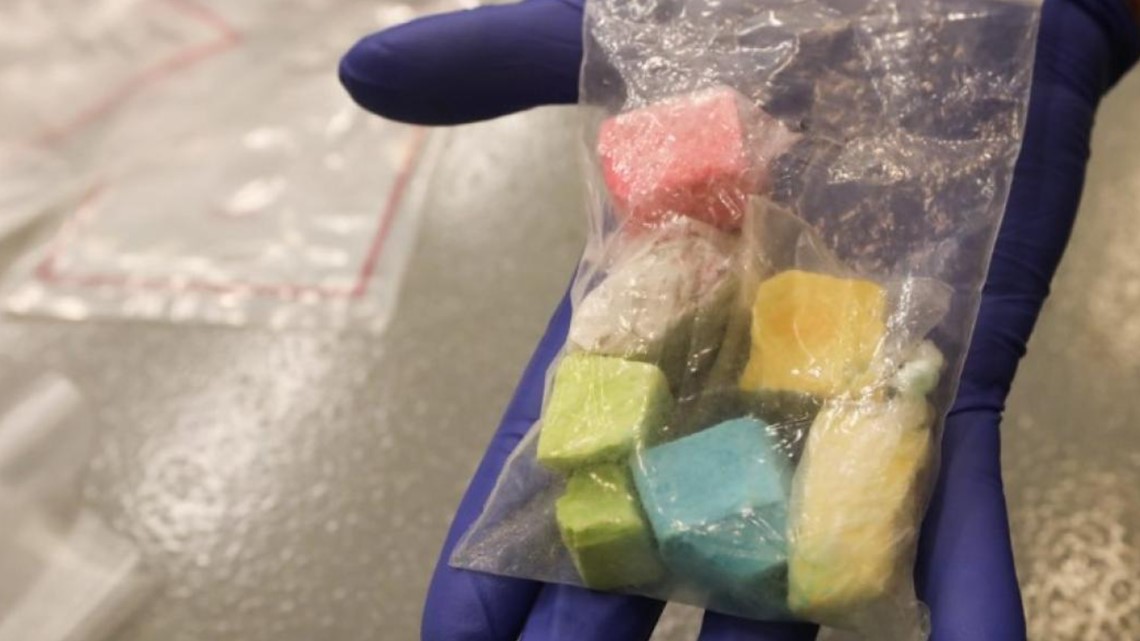
The pills are also rapidly changing form. While investigators say they're primarily finding the pale blue "M-30" pills, they've also found "rainbow fentanyl," which looks like small colorful pills or sidewalk chalk, along with pills manufactured to look like Xanax, Vicodin, Percocet, and other prescription medications.
"If it doesn't come from a doctor, if it doesn't come from a pharmacist, you've got to assume it's got fentanyl in it," said Strahm.
The Impact 'It really is Russian roulette'
Fentanyl has legitimate medical uses, typically for patients with chronic severe pain or severe pain following surgery. It's up to 100 times more potent than morphine, and produces effects similar to other opioids: euphoria, pain relief, sedation, nausea and vomiting. But in medical scenarios the drug is closely monitored because of the high potential for overdose. Only two milligrams of fentanyl — the size of a few grains of sand — can be lethal depending on a person’s body size, tolerance and past usage, according to the DEA.
42% of pills tested for fentanyl by the DEA contained at least 2 mg of fentanyl, a potentially lethal dose.

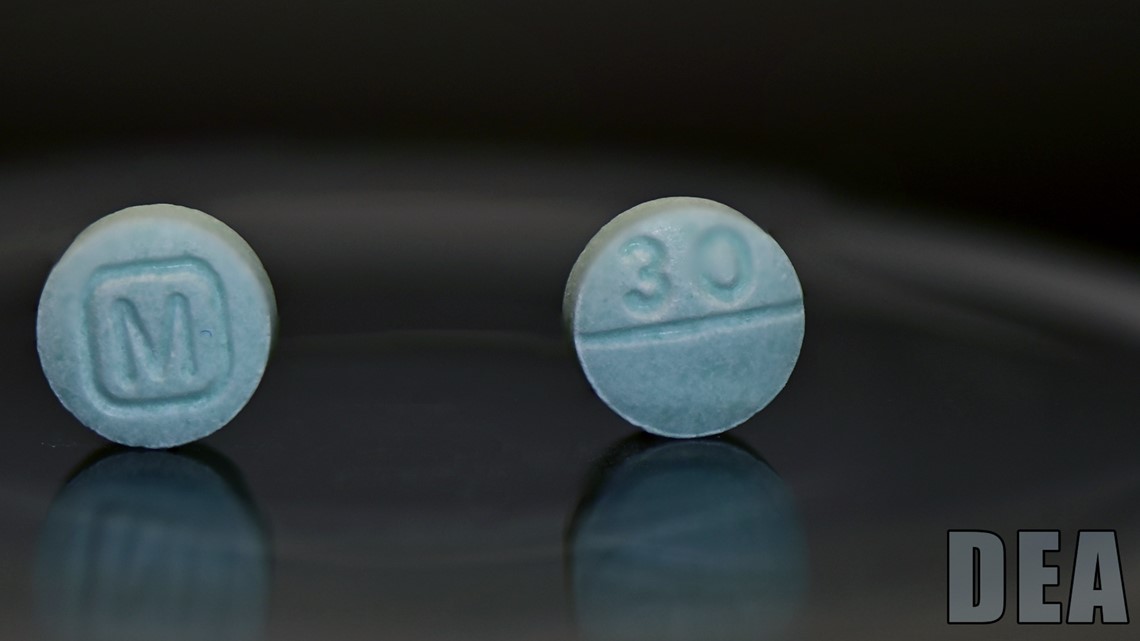
"It really is Russian roulette," said Dr. Ana Hilde, a children and adolescent psychiatrist who specializes in working with youth struggling with addiction and mental wellness. "These pills are not standardized. One can have a little bit of something, and another can lethal doses."
According to the Oregon-Idaho High Intensity Drug Trafficking Areas, among all ages, deaths from fentanyl increased by 617%, from 71 in 2019 to 509 in 2021. In 2021, 66% of all overdose deaths were related to fentanyl, according to the CDC.
Fentanyl doesn't always kill and some people taking it are rapidly getting addicted. Dr. Hilde said providers are noticing that after only a few uses, the drug starts to re-work neural pathways in the brain.
"People are getting addicted much faster." And, Doctor Hilde said the withdrawal symptoms last much longer. "It's highly fat-soluble, so it actually stays in the body for a long time."
Fentanyl addiction is a different beast, she said, like nothing health care providers have ever seen before.
"We're just seeing the tip of the iceberg in terms of what's going to be happening."
RELATED: Portland health care providers sound the alarm about fentanyl as deputies announce major bust
We Need to Talk About It 'This will continue to get worse and worse unless we as a community do something different'
At the center of the fentanyl crisis are families like Griffin Hoffmann's, people whose lives will never be quite whole again after the loss of a child. But his mother, Kerry Cohen, said it's important to keep raising awareness of the danger of the drug, to try and prevent other tragedies.
"It remains important to me to keep my son alive this way," she said. "I know that his story can help others or create more awareness. But mostly for me, it's about keeping him alive."
Cohen said she and Griffin's father had open conversations with him about drug use — that she was open about her past drug use and that she knew that he had been experimenting with marijuana and prescription medication.
"I started having conversations with him when he was young, even pre-teen years. I always told him that he wouldn't be in trouble, I just wanted to have open discussions constantly."

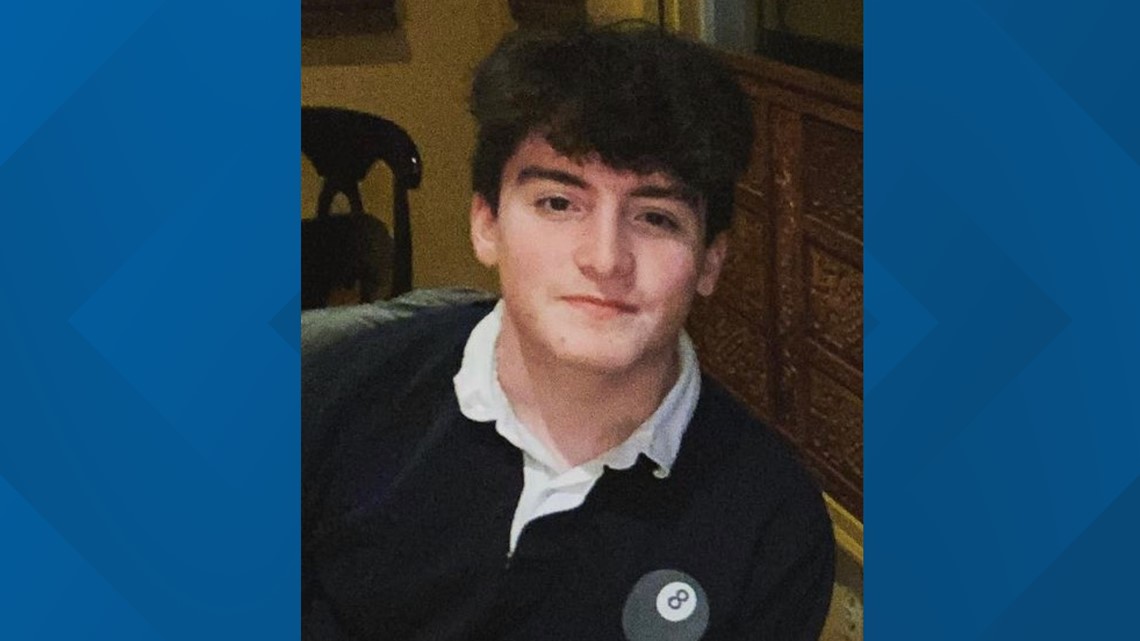
But fentanyl wasn't on her radar. She didn't know at the time how prevalent it was. "I had said to him, don't ever take something if you don't know what it is. But he thought he knew what it was."
"These numbers tell me that there's an urgent need to reach out to our youth in our community and educate people," Dr. Ana Hilde said. "Because this will continue. It will continue to get worse and worse unless we as a community do something different."
When it comes to drugs, there are two populations among youth, Dr. Hilde said. The first are kids who are "drug naïve." They're experimenting with drugs, but they don't have a major problem with substance abuse or addiction, and may stumble onto fentanyl in the course of experimentation, the way Griffin did. The other camp is kids who are knowingly using fentanyl to get high, who are developing addictions to the drug.
"Every parent needs to be talking to their kids about this," said Dr. Hilde. "For a while, people were thinking opiates — oxys, Percocets — but any pill that isn't from the pharmacy likely has fentanyl in it. MDMA, ecstasy, Xanax, whatever it is, it likely has fentanyl in it."
Doctor Hilde said that the best way adults can approach talking to their kids about fentanyl is to take an inquisitive approach.
"Developmentally teenagers are supposed to be experimenting, they're supposed to be much more focused on their peers, family isn't as important. We think about them as being 'rebellious,'" she said. "So when you have a more dogmatic approach like, 'don't ever do this, you shouldn't be doing this, that's not good,' that's generally not very helpful. What I find is that youth will just dig in and be like, 'Well, I'm going to do it anyway.'"
Instead, she urges adults to sit down with kids and ask questions.
"Say, 'hey, I heard about fentanyl. Let's talk about it. Have you ever seen this? Any of your friends doing this? This is what I know about it, what do you know about it? Let's come together, let's share our knowledge,'" she said. Young people are capable of making very good decisions if they have the knowledge and information to do so, she added.
"Trust yourself. Trust yourself as a parent. Give them the information, knowing that you have to allow them to step out and live their lives."
Public health experts agree — the conversation is more effective when authority figures focus on listening to kids and offering facts, not judgement. Parents should focus on keeping kids safe, not on punishment.
It's important that kids know why fentanyl is so dangerous, and the consequences of an overdose. They should know what to look out for in pills, not to mix drugs, not to use drugs alone and how to recognize the signs of an overdose.
It's never too early to begin talking with them, and adults should encourage them to talk to their friends about it.
"This is an ongoing conversation. This is not a conversation you're going to have one time. You're going to keep on repeating it."
Offer facts, not judgement:
- Fentanyl is a very strong opioid, and an amount the size of a few grains of sand can kill
- It's odorless, tasteless, and is often mixed into powders and shaped into counterfeit prescription pills
- Recognize the signs of an overdose--slow or no breathing; gurgling, gasping, or snoring; cool, clammy skin; blue or gray lips or nails
- Call 911 immediately and use Narcan/naloxone to reverse an overdose
Harm Reduction 'Every family should have Narcan. Everywhere.'
For Cam Strahm, the conversation about fentanyl with his kids came about because he was issued Narcan as part of his job with the DEA.
"I was driving home with a Narcan kit and it was my epiphany to talk to my kids. I'm more likely to use Narcan at a Friday night football game than I am for work."
Naloxone, better known by the brand name Narcan, is a nasal spray that can reverse an opioid overdose. Experts are increasingly urging people to carry it.

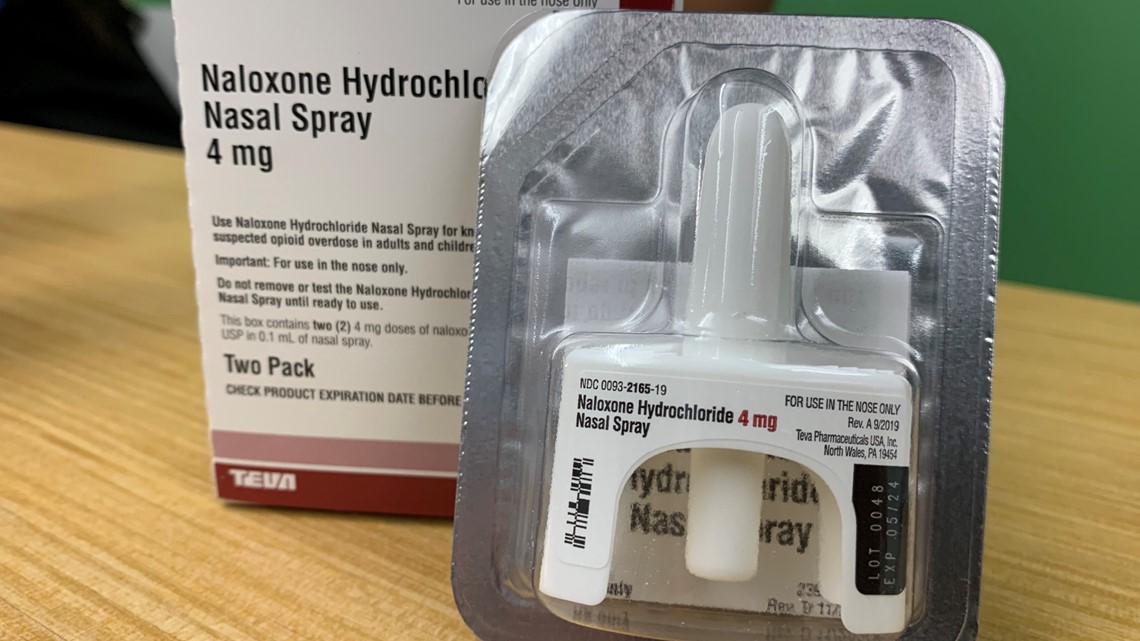
"Every family should have Narcan. Everywhere," said Dr. Ana Hilde. "My nine-year-old should probably have some."
Narcan is available at pharmacies and harm reduction clinics, and some health insurance plans cover the cost. There is also an ongoing effort to get naloxone stocked in schools.
The Oregon City school board unanimously voted in March to begin stocking naloxone in schools and provide training in its use. The effort was spearheaded by Michele Stroh, whose son Keaton died from a fentanyl overdose from a counterfeit prescription pill in 2020.
Multnomah County's Harm Reduction Program offers fentanyl test strips for drug users to test their supply, in addition to other harm reduction strategies like needle exchanges. Test strips allow users to test their drugs in advance to be sure they are not laced with fentanyl. The strips are typically not available in pharmacies but can be ordered online.
"But you still need to be talking to your kids about it," said Dr. Hilde. "Because somebody could just take that one pill and think they can handle it. Or they could be down in their bedroom in the middle of the night."
"Which is exactly what happened," said Griffin Hoffmann's mom, Kerry Cohen.
Mental Health Holes 'The state of Oregon is failing our youth'
When it comes to youth and teenagers, the mental health supports needed to combat the fentanyl crisis largely don't exist in Oregon, according to Dr. Hilde.
"Our children's mental health system is stretched to the limit. It was, even before COVID, and then it became even harder."
Trying to get a child in to see any kind of mental health provider is challenging, Dr. Hilde said. There are no detoxification or withdrawal management services available in the state of Oregon for people under 18, and she said it's very hard to find someone who is willing to start a child on the medication needed to manage withdrawal symptoms from ongoing fentanyl use.
"I can't say this enough: the state of Oregon is failing our youth."
Youth mental health has suffered drastically during the pandemic. In a study from the Centers for Disease Control, more than half of kids say they were verbally abused by an adult in 2020, when schools were closed and kids were stuck trying to learn from home. More than one in 10 teens said they were physically abused and 66% said they found it difficult to complete their school work. About 45% of high school students reported feeling persistently sad or hopeless, and one in five had contemplated suicide.
“The statistics have always been alarming and the pandemic has just exasperated everything,” said Emily Moser, director of the YouthLine program with Lines for Life.
Kerry Cohen, Griffin Hoffmann's mom, said she saw herself how Griffin and his friends struggled with mental health. "Their whole generation — in their experience, the world is ending. Environmentally, and then Covid happened —they are just looking for ways to feel better."
How Do We Stop This? 'It's got to be more than just enforcement'
Law enforcement officers say despite the flood, they're optimistic they can turn the tide on the crisis.
Cam Strahm said the Drug Enforcement Administration is working closely with local, state, federal, and tribal partners to combine resources, share investigative techniques, and gather evidence in order to put together a case against drug traffickers and dealers.
"I'm optimistic. We're getting the education, we're getting the conversations out there. There's certainly a lot of efforts going in on a daily basis."
They're focused on bringing charges against drug trafficking organizations and reducing the availability of the drug on the streets.
Law enforcement officers are also going up the chain of distribution for the drugs, said Assistant U.S. Attorney Scott Kerin. "They go to the first person that supplied them, find out what they can, go to level two, then they go to level three, and they're trying to take this as far up the chain as we can."
In the case of Griffin Hoffmann, 24-year-old Manuel Antonio Souza Espinoza of Vancouver, is charged with supplying the fentanyl that killed him. Prosecutors describe him in court documents as being a “merchant of death.” He now faces federal charges that include conspiracy to distribute and possess with intent to distribute fentanyl, resulting in death.
Federal prosecutors described Espinoza as a "third-level" supplier of counterfeit pills in the Portland area. As an alleged third-level supplier, Espinoza is not accused of selling the fentanyl pills to Hoffmann directly — according to court documents, there were two people who handled the drugs between Espinoza and the teenager.
If convicted, Espinoza faces a mandatory minimum of 20 years in prison on that single charge alone, and a maximum of life imprisonment. Espinoza has pleaded not guilty.
Cohen has also filed a wrongful death lawsuit against Espinoza, requesting a total of $510,000 in relief for Hoffmann's family.
But it's difficult to put together a criminal case. Espinoza was present at a home in Gresham that was raided by law enforcement last year, where officers found 12,000 pills, 9 guns, body armor and $35,000 in cash, but he wasn't charged.
"The standard is that you have to prove it beyond a reasonable doubt," said Kerin. "Whenever you go into a house, if you've got multiple people there, you also have to be able to apportion responsibility."
Kerin was able to charge Espinoza in Hoffmann's death during a targeted investigation. He said that investigators also have to prove causation — that a person would not have died if not for taking fentanyl.
"These cases do become personal," he said. "There is a child out there who has died from fentanyl. There is a family out there that has lost a loved one because of fentanyl. And there is a dealer out there who is peddling death for profit."
But law enforcement alone can't stop the rising threat of fentanyl.
"There's not enough people. There's not enough people at any level," said Strahm. "There's just not enough people for the flood that's coming in and being consumed in Oregon and Idaho. I don't think there's going to be a slowdown until demand starts to recede a little bit."
In order to slow the fentanyl crisis, adults need to talk to kids about it, he said, and continue to break down the barriers between education, treatment, prevention, and law enforcement.
"We're not going to solve this with a law enforcement-only approach. It's going to take collaboration across public health and law enforcement and across spectrums we've never had to deal with before to share experience and ideas and have a more holistic approach."
Losing Griffin 'No matter what, my son's death was pointless'
"For me, nothing can help. Nothing can help."
Kerry Cohen lives with the unbearable knowledge that she was home when her son died. He had gone down to his room to bed for the night. She'd had no reason to go and check on him.
He was found dead the next morning, when his dad went to wake him up for school. One pill, a fake oxy, a few grains of fentanyl, blew a hole in her life. It blew a hole in his father's life, and his friends' lives.
"Some of his friends lost the person that they turn to with their own mental health struggles," Cohen said.
His death was pointless. He shouldn't have died. But she's determined to keep him alive by talking about him, his heart, and how he died.
"He would want that," she said. "What I know for sure about my son is that he was very, very caring about other people. He cared about social justice, he stood up for his friends all the time."
In a heart-wrenching way, Griffin's death changed his friends' lives for the better, because now they know what to look out for when it comes to drug use.
Within days of Griffin’s death, public health and law enforcement agencies began issuing urgent public warnings about counterfeit prescription pills.
Adam Skyles, the principal at Griffin’s school, Northeast Portland’s McDaniel High School, posted a video on Instagram warning his 1,400 students about the counterfeit pills and asking them to turn them in, no questions asked.
"No matter what, my son's death was pointless. But if he had to go, he would want people to learn from it."
Resources
Dr. Ana Hilde recommends that any parent who has concerns reach out to a mental health provider or outpatient substance use program to start a process of communication and possible assessment
Youth Outpatient substance use resources
- Beaverton, Hillsboro, Gladstone, Gresham, NE Portland
- REAL – culturally focused for African American youth
- Breakthrough – Intensive outpatient program for substance use, trauma, truancy and gang involvement, 13-17
- Portland
- Gresham
- Vancouver, WA
- Ages 12-18 co-occurring mental health therapy
- Dual diagnosis school-based program with peer support
- Portland
Youth Residential Treatment substance use programs
- Dual diagnosis, shorter length of stay
- Tigard
- Provides medication assisted treatment for opiate use
- Dual diagnosis 12-17
- Spokane (female only) and Brush Prairie (male only)
- Provides medication assisted treatment for opiate use
- Residential alcohol and drug treatment with outpatient mental health services, 12-17
- Gresham
- Dual diagnosis
- Prineville
- Residential A&D, 13-17
- Roseburg
- SAGE – focus on trauma, 11-16 yo


